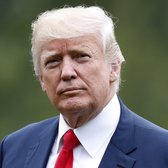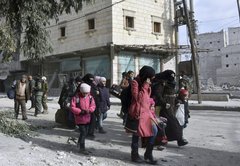Build a safe zone for Syrian refugees
Donald Trump
“They should build a safe zone. Take a big piece of land in Syria and they have plenty of land, believe me. Build a safe zone for all these people, because I have a heart, I mean these people, it’s horrible to watch, But, they shouldn’t come over here. We should build a safe zone.”
Trump-O-Meter

Promise Broken

